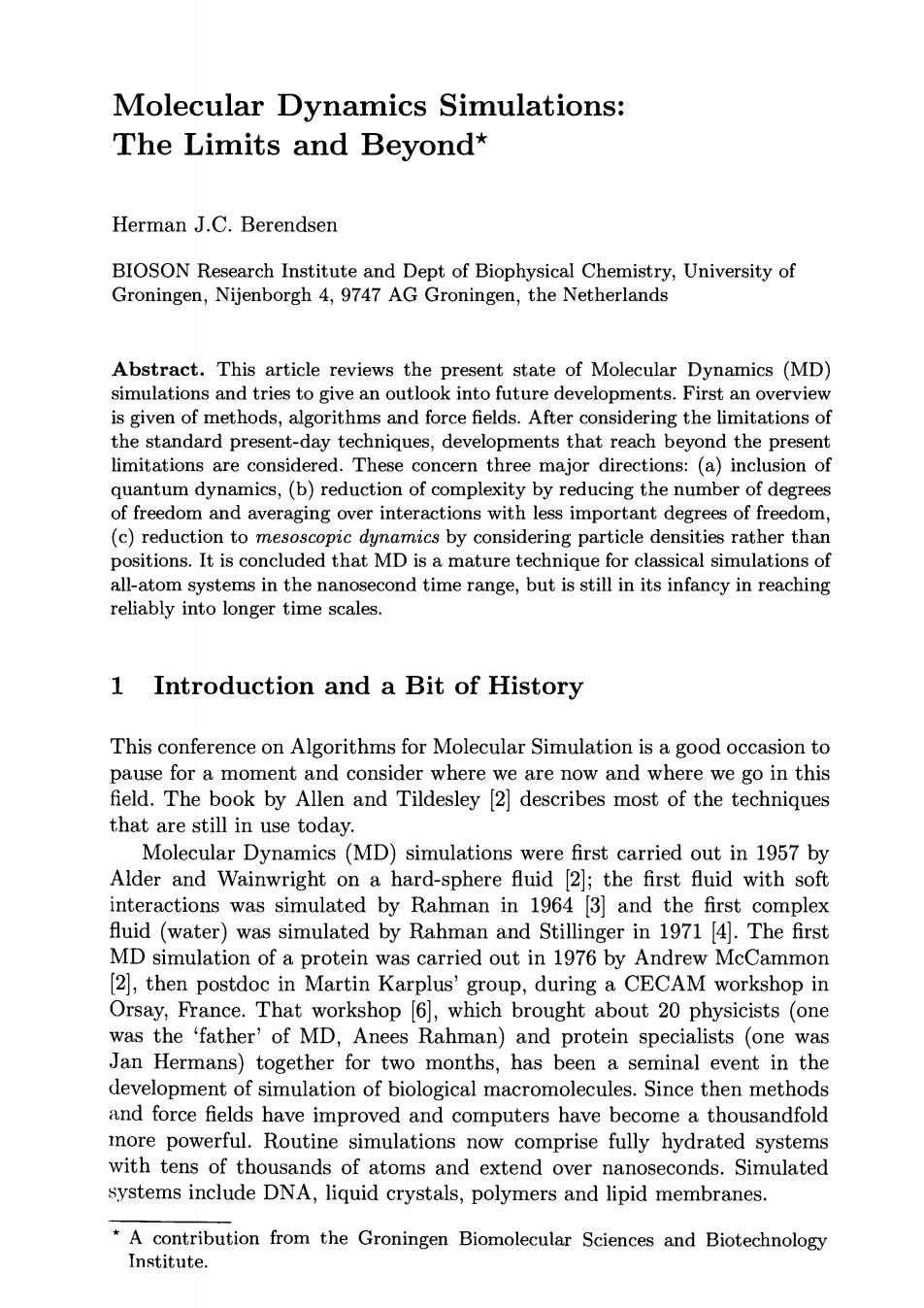正在加载图片...

Molecular Dynamics Simulations: The Limits and Beyond* Herman J.C.Berendsen BIOSON Research Institute and Dept of Biophysical Chemistry,University of Groningen,Nijenborgh 4,9747 AG Groningen,the Netherlands Abstract.This article reviews the present state of Molecular Dynamics (MD) simulations and tries to give an outlook into future developments.First an overview is given of methods,algorithms and force fields.After considering the limitations of the standard present-day techniques,developments that reach beyond the present limitations are considered.These concern three major directions:(a)inclusion of quantum dynamics,(b)reduction of complexity by reducing the number of degrees of freedom and averaging over interactions with less important degrees of freedom, (c)reduction to mesoscopic dynamics by considering particle densities rather than positions.It is concluded that MD is a mature technique for classical simulations of all-atom systems in the nanosecond time range,but is still in its infancy in reaching reliably into longer time scales. 1 Introduction and a Bit of History This conference on Algorithms for Molecular Simulation is a good occasion to pause for a moment and consider where we are now and where we go in this field.The book by Allen and Tildesley [2]describes most of the techniques that are still in use today. Molecular Dynamics (MD)simulations were first carried out in 1957 by Alder and Wainwright on a hard-sphere fluid 2];the first fluid with soft interactions was simulated by Rahman in 1964 [3]and the first complex fluid (water)was simulated by Rahman and Stillinger in 1971 [4].The first MD simulation of a protein was carried out in 1976 by Andrew McCammon [2],then postdoc in Martin Karplus'group,during a CECAM workshop in Orsay,France.That workshop [6],which brought about 20 physicists (one was the 'father'of MD,Anees Rahman)and protein specialists (one was Jan Hermans)together for two months,has been a seminal event in the development of simulation of biological macromolecules.Since then methods and force fields have improved and computers have become a thousandfold more powerful.Routine simulations now comprise fully hydrated systems with tens of thousands of atoms and extend over nanoseconds.Simulated systems include DNA,liquid crystals,polymers and lipid membranes. *A contribution from the Groningen Biomolecular Sciences and Biotechnology Institute